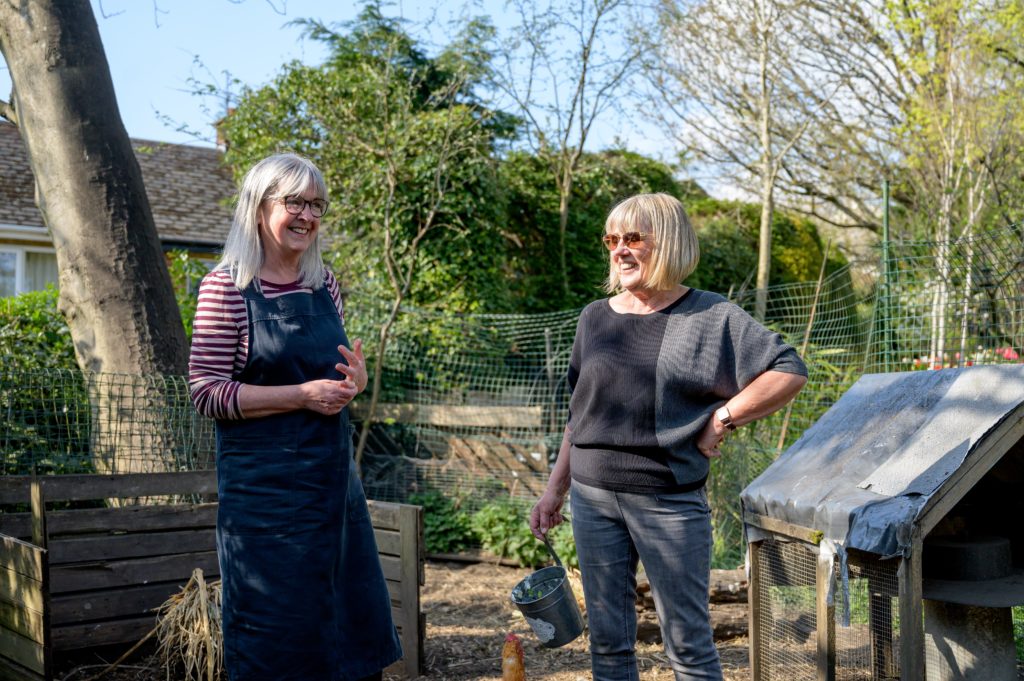Strategies for Successful Community Engagement in Government

Whether you’re working on a big policy change or a small infrastructure project, getting your engagement strategy right can have a real impact on both the outcome and your community.
In our previous blog, we looked at what stakeholder engagement looks like for government groups, why it matters, and three major barriers to engagement.
Community and stakeholder engagement plays an important role in the success of government projects, policy, and governance. But it’s clear that many government organizations face significant challenges when it comes to incorporating stakeholder engagement into existing processes, updating tools and practices, and getting people to participate.
So, let’s unpack some community engagement strategies that can help overcome the barriers and improve stakeholder practices in government.
(8) Community Engagement Strategies for Government Organizations
The following community engagement strategies and best practices can help you drive positive change, starting from within.
1. Start With Internal Stakeholders
Before you can make a plan to engage the public, you should make sure your internal stakeholders are onboard. Make a case for stakeholder and community engagement to ensure you have support from colleagues and decision makers. Put together a simple stakeholder engagement plan to outline the goals, process, and resources you’d need to invest in — and ensure that this plan gets read and accepted by your internal stakeholders.
| Engagement in Practice: Grant Expert Management
The United States Department of Energy uses Simply Stakeholders to manage a specific group of stakeholders — experts in various energy-related topics right across the country. In order to evaluate grant applications and determine eligibility (and award amounts), the department relies on independent subject matter experts. By managing these experts inside stakeholder software, the department can organize them into groups based on expertise, location, and other characteristics to quickly identify the ideal expert for a specific grant. They are able to track their areas of expertise, past programs they’ve been involved in, various characteristics including DEI categories, making it easy to quickly identify suitable experts for new grant programs, They can also track interactions, add tasks, and more. The easy-to-use Simply Stakeholders offers greater coordination across teams as well as significant process efficiencies. |
2. Analyze and Prioritize Stakeholders
Many government groups have tens of thousands of potential stakeholders (or more). At this scale, it’s impossible to give individual attention to each person. Stakeholder analysis and stakeholder mapping can help you understand your stakeholders, organize them into groups, and decide on specific communication and engagement strategies for each. This will enable you to provide more frequent or hands-on engagement to specific stakeholders that need it most, while taking a broader approach to other groups.
| Engagement in Practice: Managing Stakeholders that Support Advocacy
Destination Sydney Surrounds South (DNSSS) is on a mission to substantially increase visitor expenditure in their region. They help local businesses by encouraging them to get registered on the Australian Tourism Data Warehouse, as well as offering support with social media, advice, webinars recruiting, and more. DNSSS uses Simply Stakeholders software to manage stakeholder contacts, track any interactions, and measure their success from those interactions. |
| Engagement in Practice: Strategically Engaging with Relevant Stakeholders
The Kansas Department of Transportation uses Simply Stakeholders to manage their stakeholder engagements that relate to the Infrastructure Investment and Jobs Act (also called the Bipartisan Infrastructure Investment and Jobs Act) which was officially passed in late 2021. They plan to use the software to strategically engage with relevant stakeholders on grants, events, and other projects that relate to the bill. |
3. Make it Accessible
If you need to reach a broad range of stakeholder groups, you’ll need to consider accessibility. This is important when you think about the potential impact of excluding (even if by accident) certain groups from the engagement.
For example, if the only opportunity to engage with stakeholders is at three events held during the day at the local community hall, you may exclude employees who work during those times, people who cannot get transport to the events, and many other types of stakeholders. Or if you only offer online surveys, you may exclude people who don’t have easy access to a computer or those who have difficulty reading. Try to offer a variety of engagement locations, times, and formats to capture a wider variety of perspectives and maximize engagement.
| Engagement in Practice: Co-Designing Improvements to the NDIS
The National Disability Insurance Agency (NDIA) is the independent statutory agency implementing the National Disability Insurance Scheme (NDIS) to fund costs associated with disability in Australia. The NDIA have moved to a ‘co-design’ model, which means working alongside people with disability, the disability community, and other interested groups to collaborate on specific problems, issues, and situations that require improvement or change. The main outcome so far has been two virtual co-design workshops, leading to the establishment of an advisory group and priority work. The NDIA is also planning to use stakeholder software to record interactions with individual participants, as well as peak bodies, community organizations, and mainstream businesses. They’re also keen to do stakeholder mapping in the future so they can get more targeted with interactions, ensuring they engage with influential and interested parties. |
4. Blend Digital and Face-to-Face
Some governments have been slow to adopt new technologies for stakeholder and community engagement, while others have embraced new tools and communication methods. Ideally, you should offer a mix of digital and face-to-face options in order to engage with a variety of stakeholders.
Face-to-face communication offers some unique advantages (like body language, group norming, and discussions) that are tricky to bring into digital forms of communication. And digital communication offers advantages as well, like being able to engage stakeholders (at any time) regardless of their location and mobility needs.
| Engagement in Practice: Community Engagement on Highly Emotive Projects
Moreton Bay Regional Council (MBRC) uses stakeholder management software to help manage and engage with stakeholders in their local community. The local population is growing quickly, requiring a number of local infrastructure projects. Many of these projects are small in size, but can be highly emotive and have a significant impact on locals. For example, a new sports complex, road and bridge upgrades, or updating public spaces at the local beach. MBRC engages their stakeholders across various events and platforms, including a dedicated consultation website, Your Say. And they use our enterprise plan, Darzin, to keep track of stakeholders, interactions, survey responses, sentiment, and more. |
5. Allow Engagement to Impact Policy
It’s not enough to simply publish information or ask for input via focus groups and surveys. Ultimately, stakeholder input should be used to influence policy and projects. This means that regulatory policy can be shaped by the people impacted by it, just as much as the government departments and officials elected to represent the people.
The benefits of this community engagement strategy are clear: engagement-led policy will be based on better information, and will be more likely to be effective and accepted. Plus, if you can demonstrate to stakeholders how their perspectives can influence projects and policy, they’ll be more likely to get involved in future, too.
| Engagement in Practice: Rail Projects Victoria Manages Public Comments and Complaints
Rail Projects Victoria uses our sister product, Darzin. With access given to their call center staff, any comments and complaints from the public are recorded in the stakeholder management software. From there, RPV can use the Task function to allocate any follow up actions to internal staff and external contractors. |
6. Rethink Frameworks
 |
Many government organizations reference stakeholder engagement frameworks when planning their community engagements. One of the most popular frameworks is the IAP2 Public Participation Spectrum, which is often used to identify which phase their engagement falls under — often with the goal of progressing from left to right.
The main problem with this framework is that some organizations use it to justify doing very little. For example, they might decide they only want to stay at the ‘Consult’ level in order to fit with the kind of effort they’d like to put into the engagement. The other problem is that community expectations have evolved considerably since the IAP2 spectrum was developed, so the goals and promises listed in the framework may not be sufficient for today’s stakeholders.
A better alternative for guiding your stakeholder engagement process is the Evaluation Framework, which our founder, Allison, designed a little over 15 years ago. It breaks down key indicators of good community engagement across the principles of integrity, inclusion, deliberation, influence, capacity building, and sustainable decisions. You can access a copy of the framework inside the eBook, Evaluating Stakeholder Engagements and Public Consultation.
| Engagement in Practice: Recording Keeping with Ministry of Transport (New Zealand)
Te Manatū Waka Ministry of Transport (New Zealand) uses Simply Stakeholders to record their stakeholder lists, along with some important interactions — specific to their strategy topics, such as decarbonization, equity and safety, and productivity. This includes critical engagements with cargo owners, freight forwarders, both national and international government organizations, media, ports and shipping lines, road transport, and couriers. By using Simply Stakeholders, Te Manatū Waka are able to record important information and keep their stakeholder lists up to date. |
7. Don’t Stop Engaging (Or Updating)
Continue to evaluate and evolve your stakeholder engagement plan and activities over time based on:
- Changes within your community
- Your understanding of stakeholder preferences
- Stakeholder feedback
- Whether or not you achieve your goals
Project finished up? There’s always something new around the corner — so continue to keep in touch with stakeholders and prepare them for engagement on your next project.
And remember that the data you’ve collected still has long-term value. Other teams or other projects may require the same information from the stakeholders for their current work or for future projects. So keep your stakeholder records on hand so that others can easily access and find the info they need — and so that the same stakeholders don’t get asked the same questions twice.
| Engagement in Practice: Keeping Organised with Infrastructure Australia
Infrastructure Australia advises governments, industry, and the community about the investments and reforms needed to deliver better infrastructure nationwide. They mainly use stakeholder software to keep their stakeholder lists organized for governments, the finance sector, academia, legal and planning, constructions, suppliers, maintenance, and operations. They only have a few interaction records, as they mainly focus on recording important meetings and emails. |
8. Implement Stakeholder Engagement Software
|
|
Many government organizations lag behind when it comes to stakeholder software for managing their community engagements. They’re often stuck with one of the following:
- CRMs – Some internal IT teams push their colleagues towards using their generic and sales CRMs, because they don’t understand the difference between stakeholder relationship management and sales processes
- Spreadsheets – These might have been an acceptable tool for managing stakeholders some 20 or 30 years ago, but today, there are far better options
Fortunately, more government organizations are turning to modern stakeholder engagement software like Simply Stakeholders to help simplify and manage the engagement process.
Our software can help you analyze and map stakeholders, track communication, understand sentiment, report on activities, and much more.
Take a look at how our stakeholder software works or contact us to request a demo.
Learn More
Want to learn more about community or stakeholder engagement strategies? Take a look at these resources:
Step-By-Step Guide to Setting Up a Stakeholder Engagement Plan [Webinar Recording]
7 Strategies for Effective Stakeholder Engagement [eBook]
Guide to Creating a Stakeholder Management Plan [eBook]
Guide to Stakeholder Analysis [Article]
How Citizen Outreach is Driving these Sustainability Initiatives in Texas [Article]































